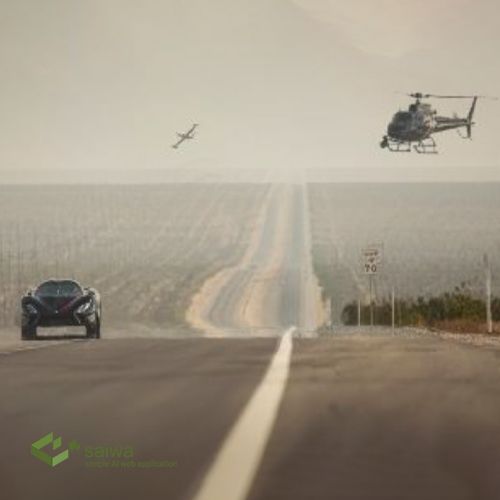Image Editing
Image editing is more vital than ever in today’s digital economy. Because as we all know, a picture is worth a thousand words, and the attraction of a stunning image in any situation is limitless. However, not all images are flawless; technological innovation has substantially aided in solving potential issues and challenges in images. We observe the development and design of image editing tools every day. These tools have solved the majority of image-related issues. We will explain the principle of image editing in the following sections. We will also introduce some image editing tools that Saiwa has specifically designed and developed that you can use to edit your images for free.

Resolution Enhancement
Resolution enhancement, often known as “super-resolution, is the process of improving the pixel density of input images that have a restricted resolution. Single-image super-resolution is a kind of resolution enhancement that recovers a high-resolution image from a single low-resolution image. This method is utilized in a variety of image processing fields. Interpolation is a common technique for increasing image resolution. Pixel interpolation outcomes might vary greatly depending on the interpolation technique used. Furthermore, when assigning accurate interpolation values to HR edge pixels, classical interpolation techniques may be more efficient.


Image Contrast enhancement
Image Contrast enhancement improves object visibility in a scene by increasing the luminance difference between objects and their backgrounds. Image contrast enhancement is typically performed in two steps: a contrast expansion followed by a tonal enhancement, but they might also be completed in one step. Contrast stretching increases brightness differences evenly over the image’s dynamic range. In contrast, tonal improvements improve brightness differences in the dark, gray, or bright regions at the expense of brightness differences in other parts.


Image Deblurring
The process of restoring a sharp image from a blurred one is known as image deblurring. It is a fundamentally inadequate problem examined in several studies over the last few decades. Various circumstances can cause image blurring, including camera or subject movement during image capture, out-of-focus optics, or scattered light distortion. Several image deblurring methods are available, ranging from classical algorithms based on mathematical principles to more current ones based on machine learning and deep learning developments.


Image Inpainting
Image inpainting is a challenging problem in image processing which deals with filling in missing parts of an image. Texture synthesis-based approaches, filling gaps with nearby available areas, have been one of the leading answers to this challenge. These solutions are based on the assumption that the missing sections are repeated someplace in the image. A broad understanding of the visual content is necessary for non-repetitive regions. This is accomplished through breakthroughs in deep learning and convolutional neural networks, in which texture creation and overall picture information are merged in a twin encoder-decoder network.


Image Deraining
One type of image restoration method that eliminates rainy artifacts from images is image deraining. In applications such as video surveillance and self-driving automobiles, one must process images and videos that contain undesired precipitation artifacts that may impair the processing algorithm’s performance. As a result, pre-processing techniques to eliminate these artifacts are critical.


Image Denoising
Image denoising is a kind of image restoration that focuses on recovering clean images by eliminating a specific type of distortion: noise. “noise” refers to the erratic development of unwanted traces and changes in brightness or color information. Noise contaminates images during capture, compression, and transmission. The degree of noise normally rises with exposure time, physical temperature, and camera sensitivity setting.

